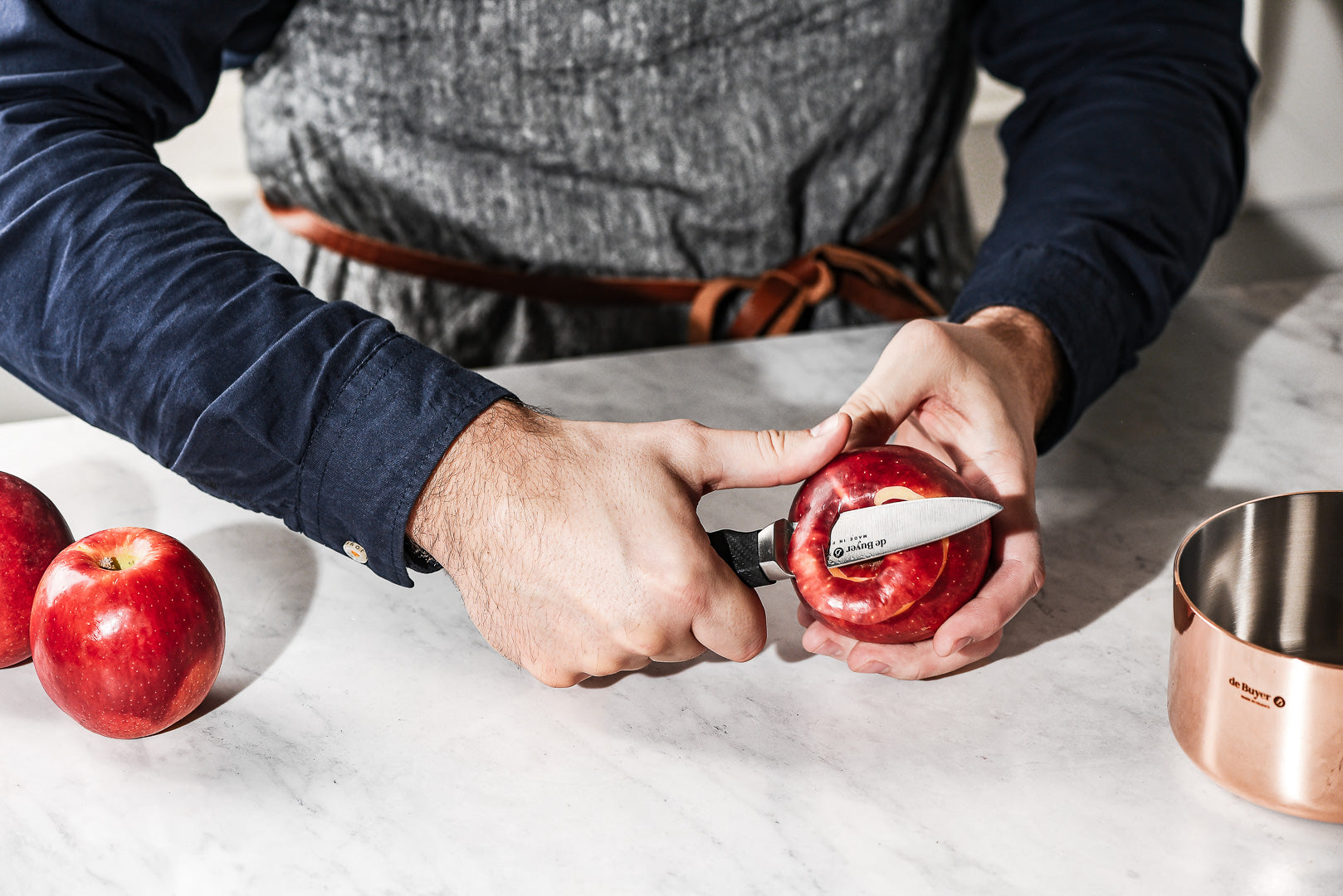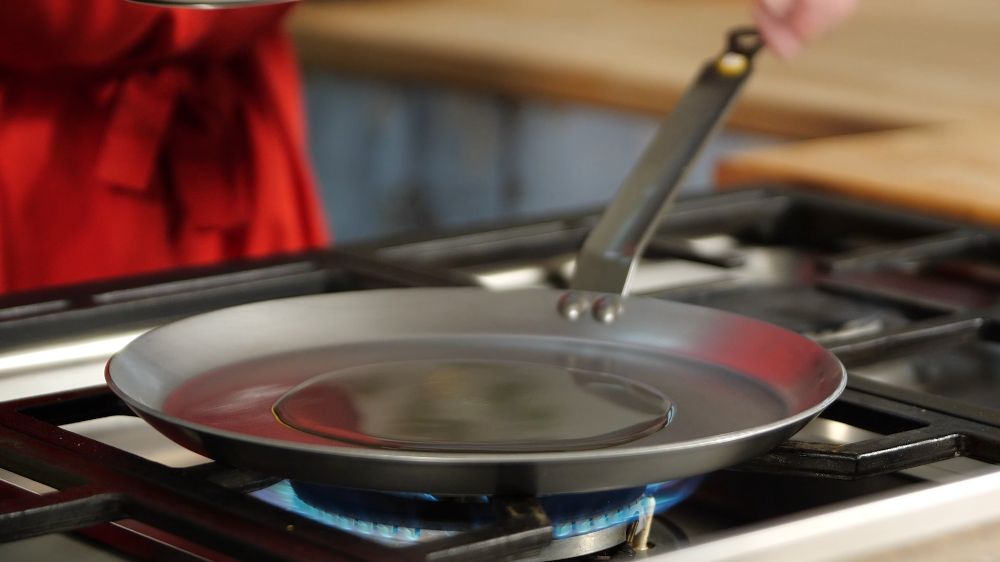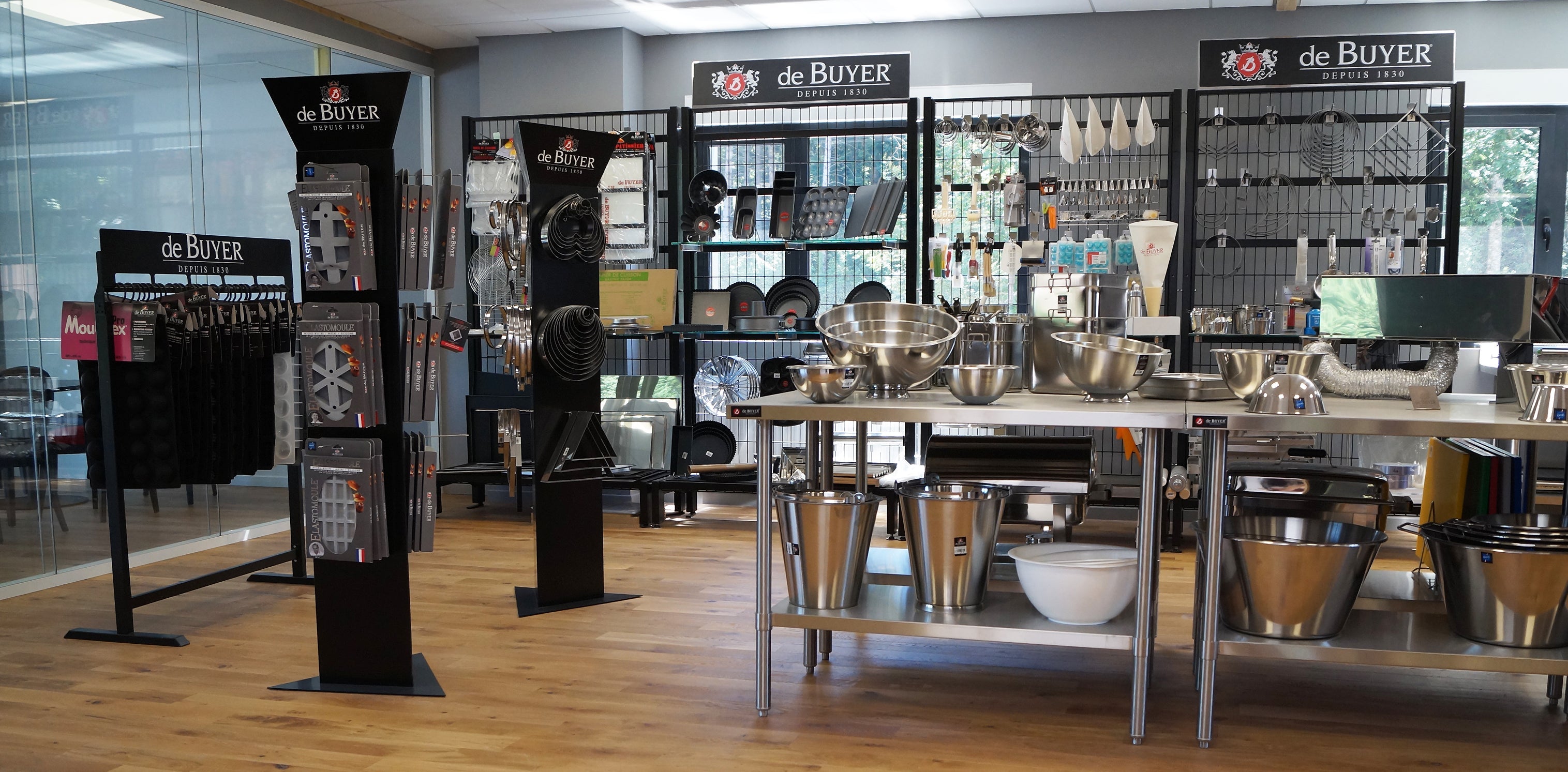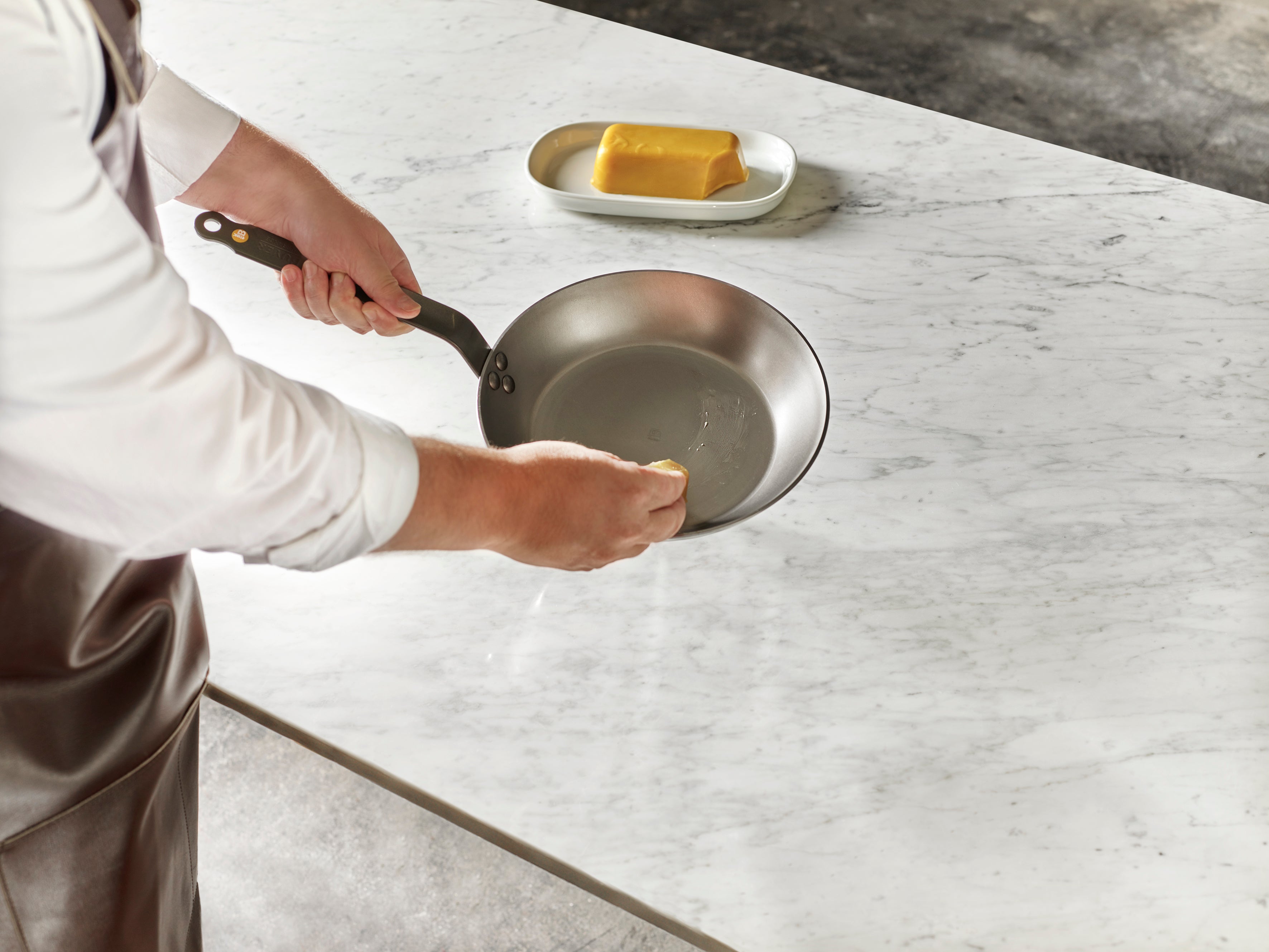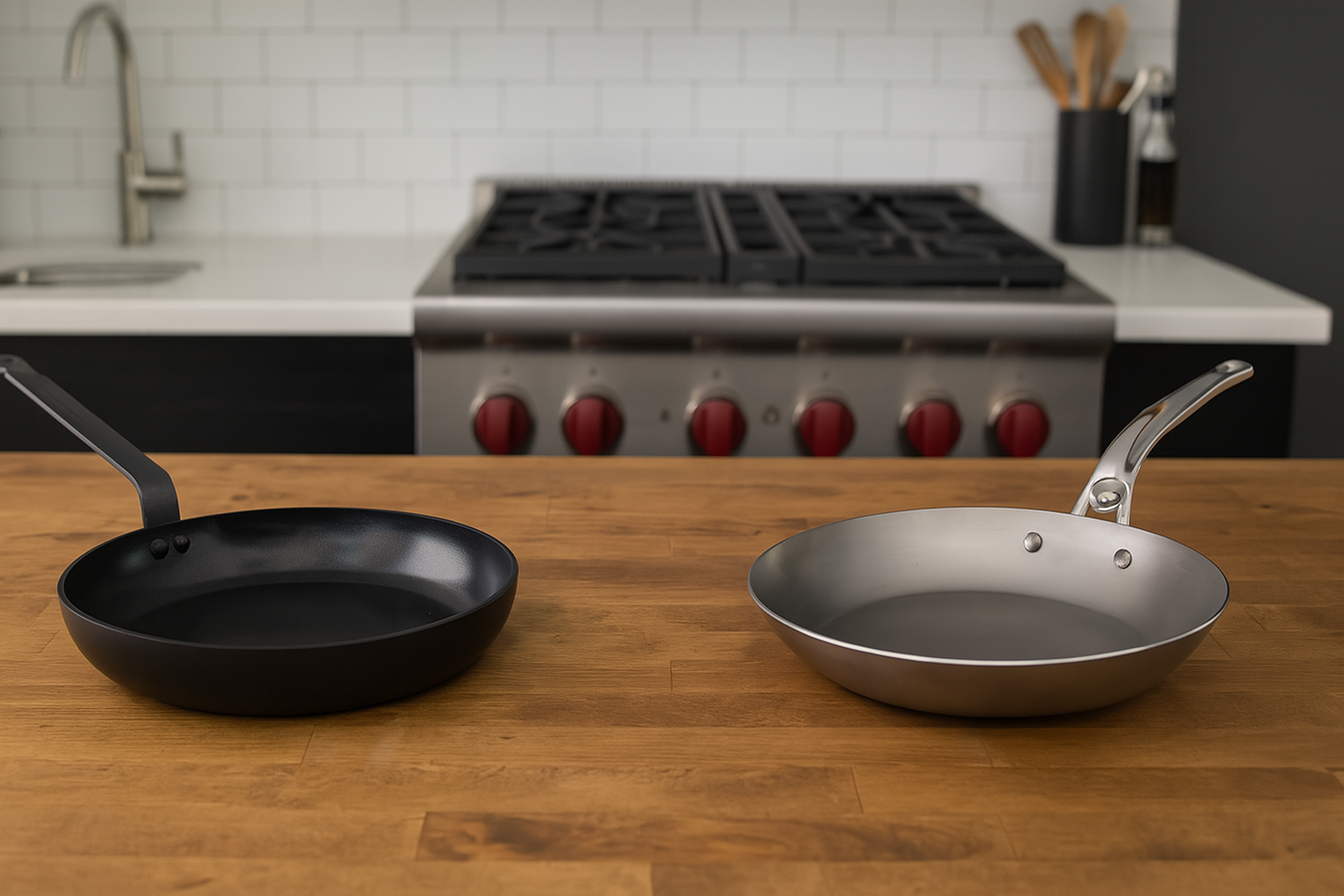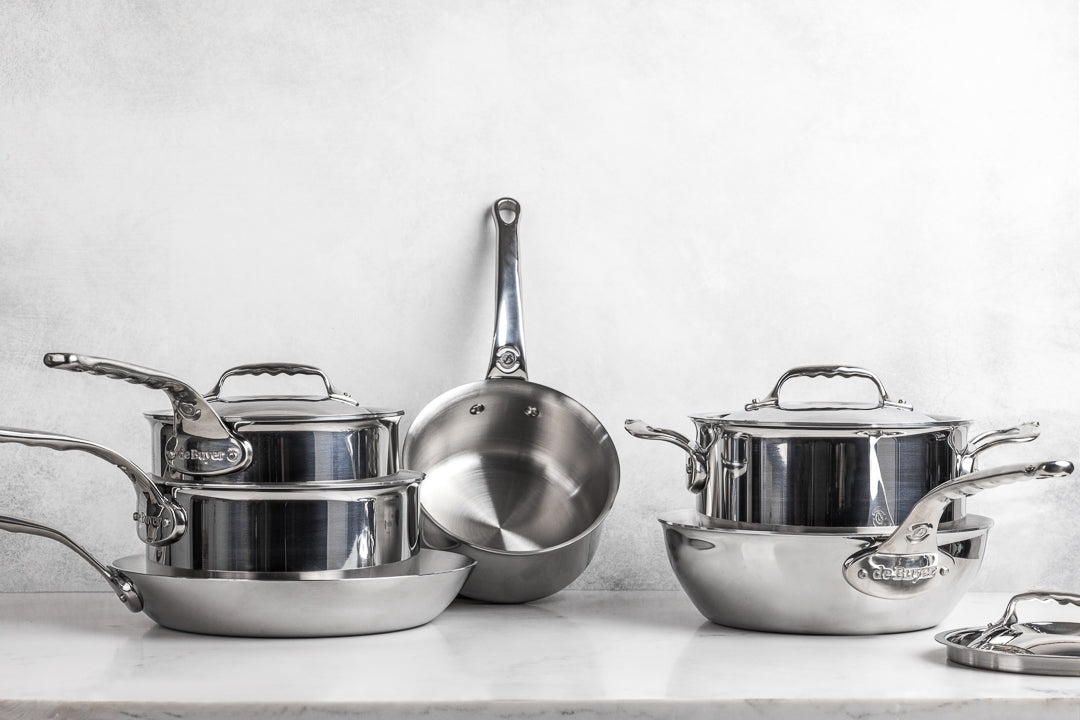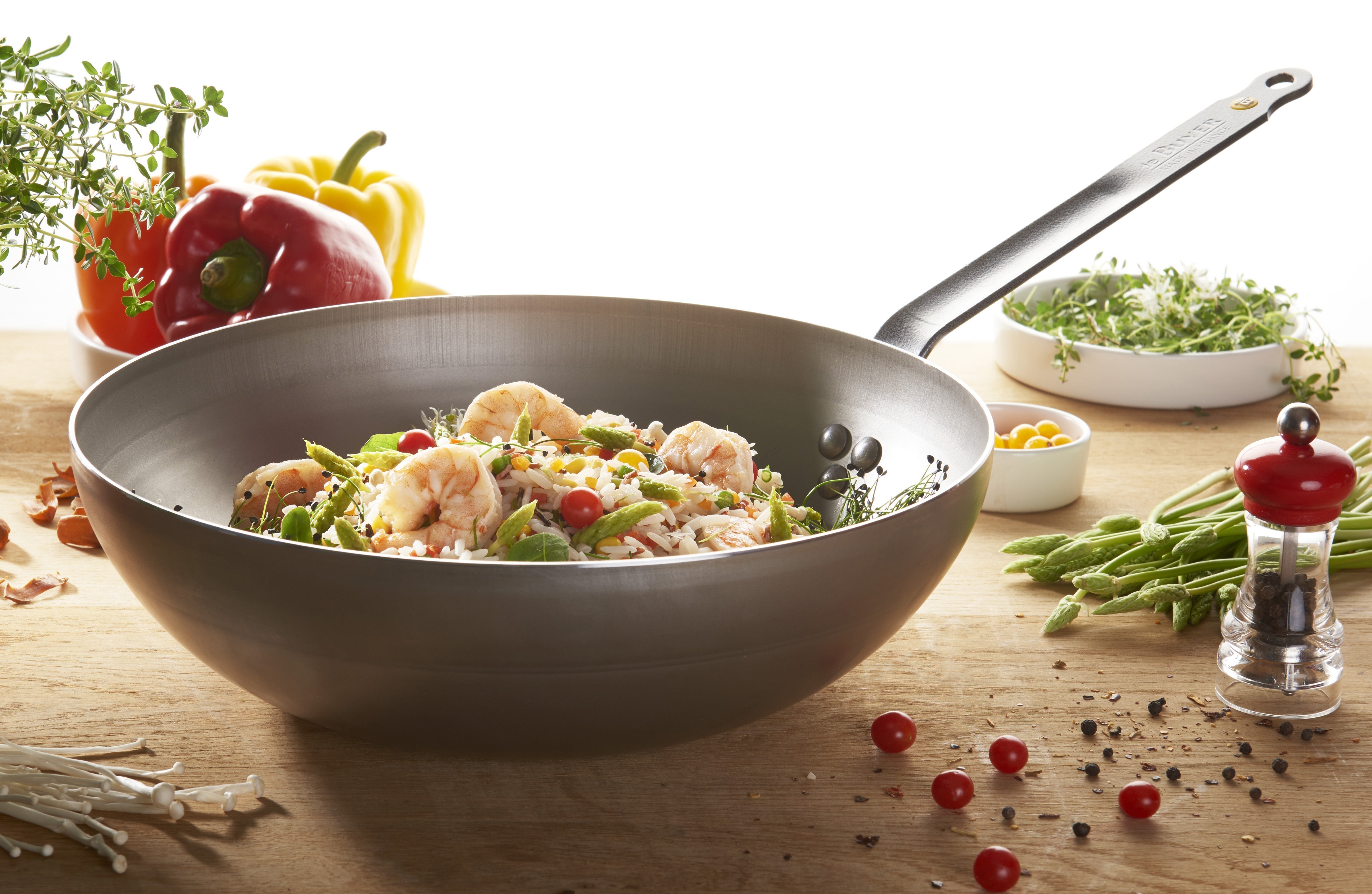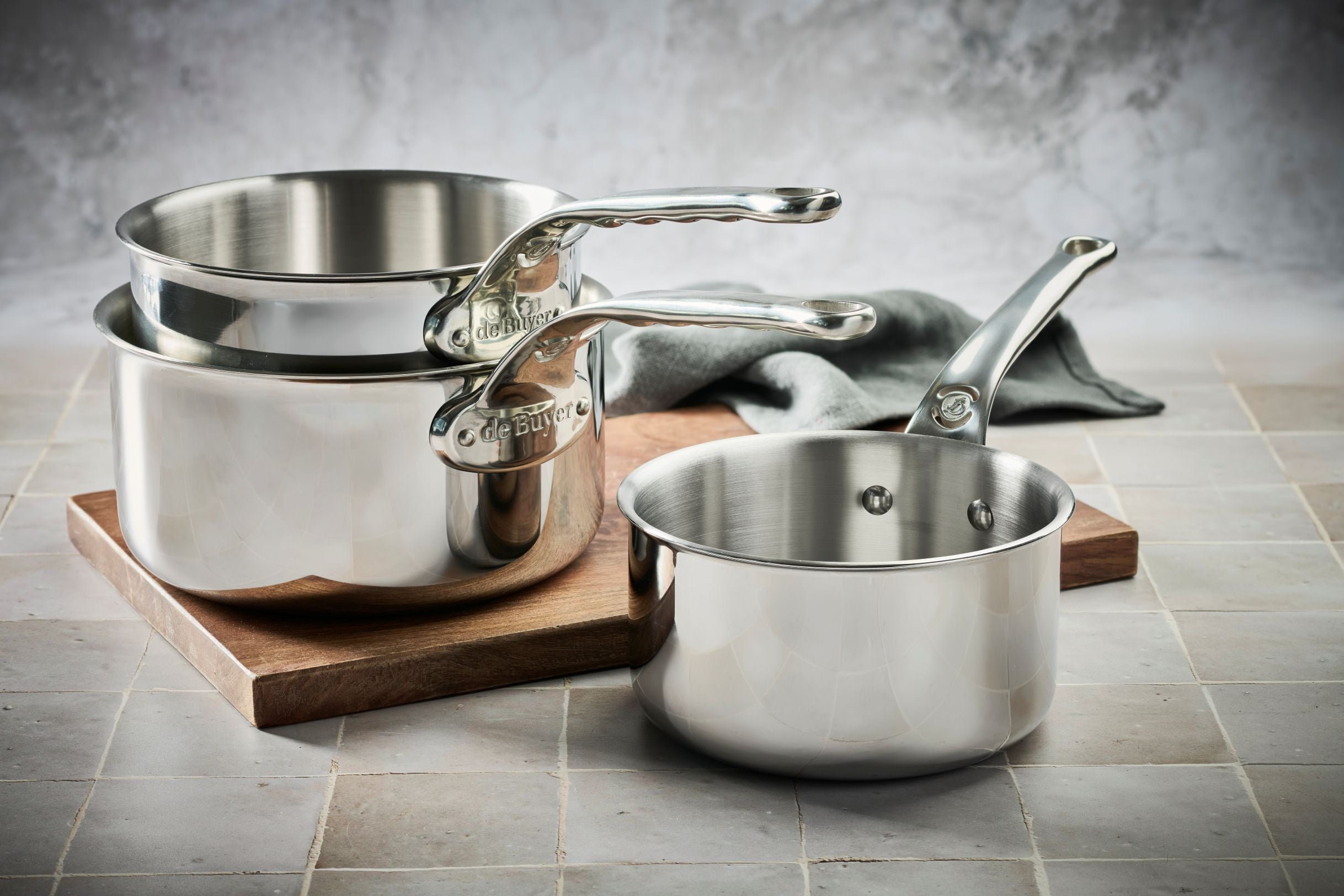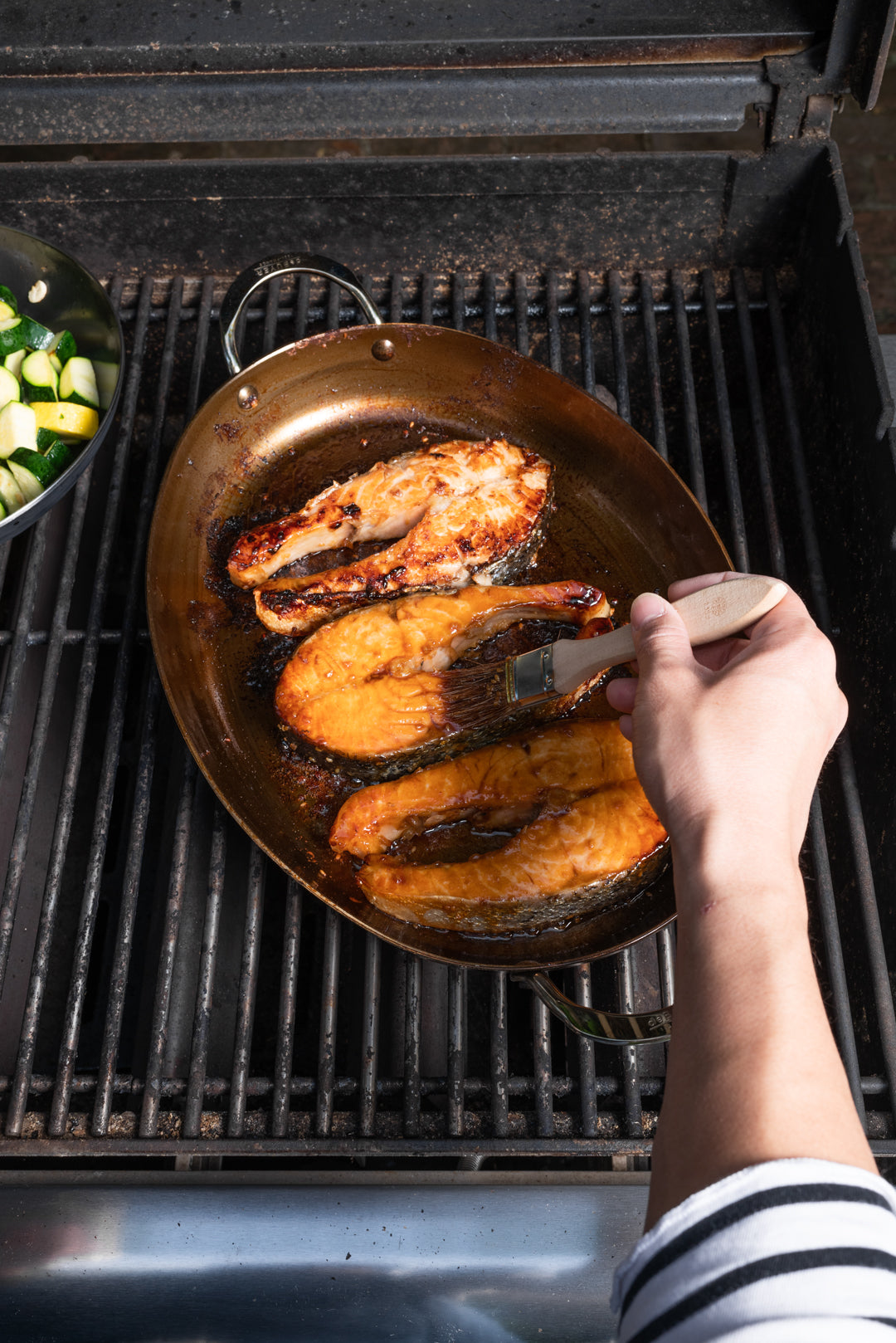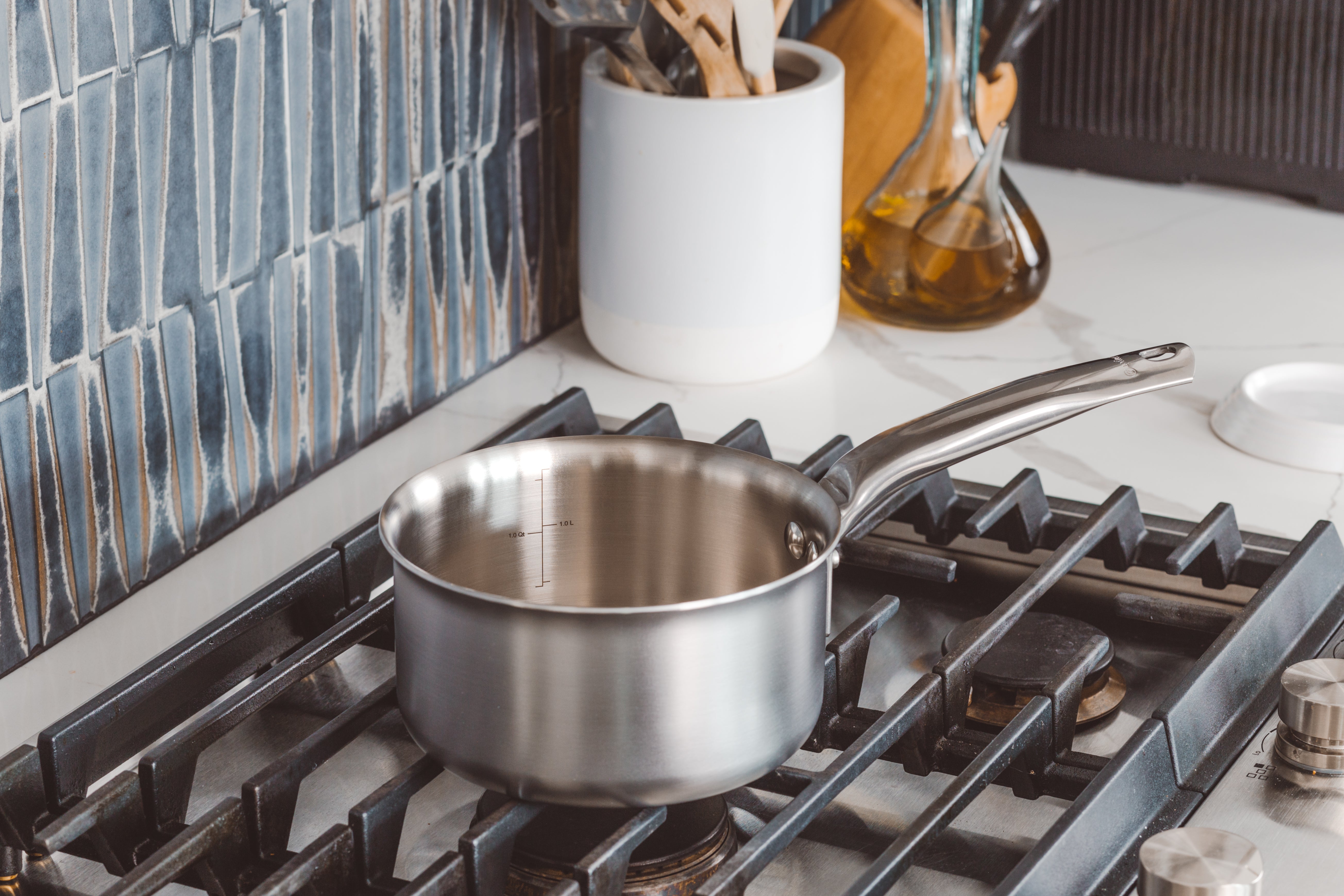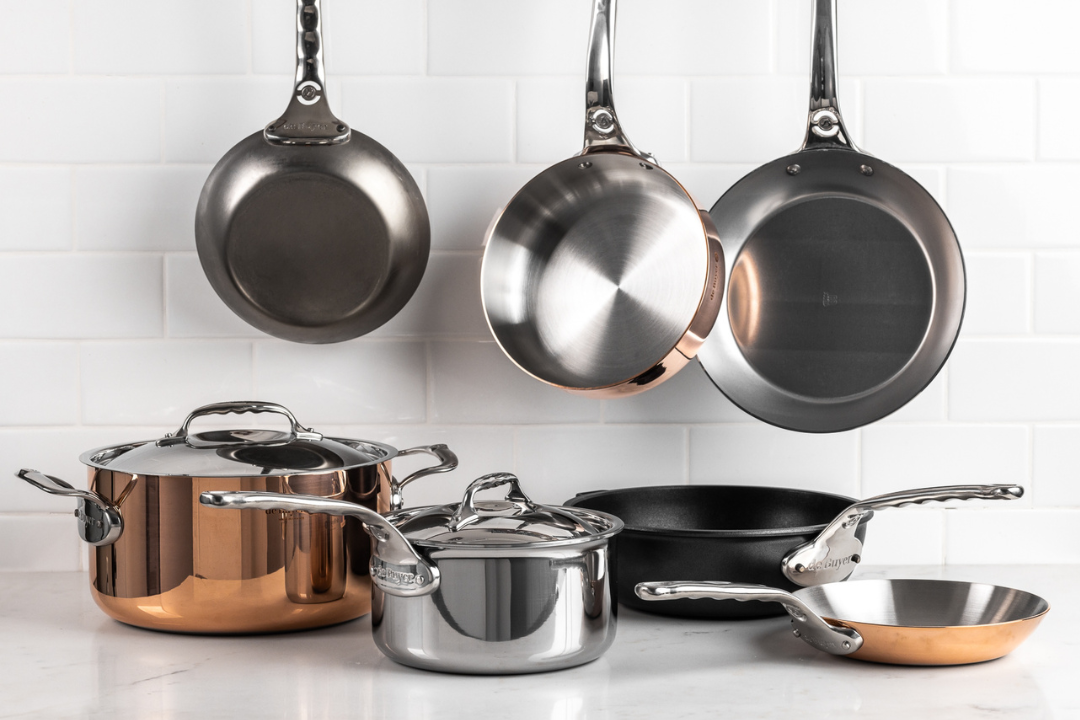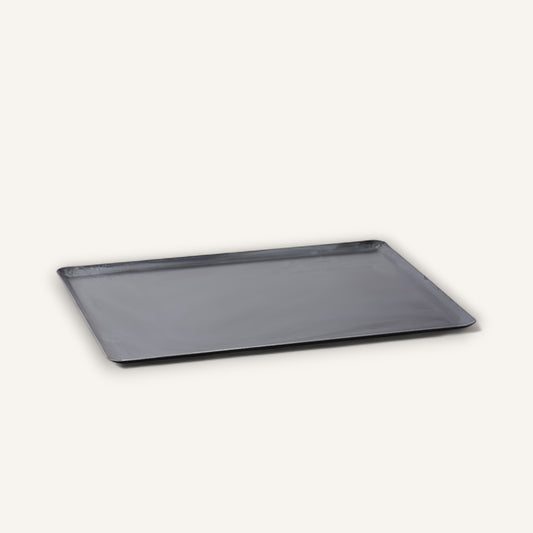Just as a frying pan can’t replace a Dutch oven, a bread knife can’t replace your go-to paring knife. Your kitchen not only needs the right cutlery for the right job, but you also need premier knives that perform efficiently every time. Quality knives enhance precision cuts and keep appendages safe during high-activity prep.
In this article, we’ll cover the types of knives required in your kitchen and the highest-quality knives available. Read on to learn more about the premier knives available on the market today.
Top Types of Kitchen Knives
Review the different types of kitchen knives to determine what’s missing in your kitchen. One knife can’t do it all.
We recommend that home cooks build their knife sets as needed. For professional chefs, consider replacing a worn knife before it starts to warp or become brittle.
Chef’s Knife: The All-Rounder
Your chef's knife, also known as a cook's knife, is your right-hand man and will always be the most versatile knife in any arsenal. It is perfectly designed for chopping, dicing, and slicing, including tasks like cleaving, cutting whole chickens, cracking crab shells, and prepping hard fruits.
The 32 Dumas 8-inch Chef Knife available at de Buyer is an ideal tool in both professional and home kitchens. Made in France, this crafted premium knife prioritizes durability, precision, and comfort. The fully forged, nitrogen-strengthened stainless steel blade offers razor sharpness and rust resistance. If you’re getting your first quality knife, this is the one to purchase. If you’re looking for a chef's blade that can excel in a dynamic professional kitchen, the Chef Knife 8" by 32 Dumas is it.
Paring Knife: Precision and Detail
A paring knife is the little sister to the chef’s knife. It’s excellent at detail work like slicing, peeling, chopping, mincing, and dicing. The paring knife’s compact size means it’s maneuverable and ideal for these exact cuts. The narrow blade can get into tight spots, create gorgeous garnishes, and execute detail work that's challenging to achieve with a chef's knife.
The stainless steel blades ensure durability, while the olive wood or carbon fiber composite handle adds elegance. De Buyer offers the 4-inch paring knife by 32 Dumas and the FK2 Paring Knife. Grab your cutting board and enjoy the unmatched precision of a de Buyer paring knife.

Santoku Knife: Japanese Excellence
Similar to the chef’s knife, the Santoku is an all-purpose knife most often used for slicing, chopping, and dicing hardier foods than the paring knife. Its smaller size and lightweight blade make the Santoku more suited to precision cutting than your standard chef’s knife.
While the knife originated in Japan, its versatility and similarity to the chef’s knife are behind its growing popularity in Western kitchens. Discover the 32 Dumas Ideal Santoku Knife or the FK2 Asian Chef Knife at de Buyer. These impressive Japanese-style knives feature a wide, sharp, scalloped blade that is both lightweight and easy to handle.
Bread Knife: Perfect for Baked Goods
The purpose is in the name. A premier bread knife will use its razor-sharp, serrated blade to cut through hard, crusty bread. Where a chef’s knife would crush, a bread knife delivers straight, clean slices through baguettes or loaves.
The de Buyer FK2 Bread Knife takes on bread, soft cakes, and fruits with ease. The 10.25-inch German stainless steel blade is paired with a carbon fiber composite handle for comfort and control. While the Santoku can sometimes fill in for the chef’s knife and the paring knife can replace the utility knife in a pinch, a bread knife has no true replacement. Its long, serrated edge is unique in the kitchen, making it an essential tool.
Utility Knife: The Versatile Tool
The utility knife’s versatility and applications for various kitchen tasks make it a star tool. It’s perfectly adapted to peeling, turning, coring, and slicing.
It serves as a middle-ground knife for tasks that are too large for a paring knife but too small for a chef’s knife. Cut medium-sized fruits, mince even the hardiest of veggies, and tackle an array of tasks with this curved blade.
The de Buyer FK2 Utility / Steak Knife is made of German stainless steel and features include an adjustable balanced handle, built-in counterweights, and a carbon fiber composite handle. Meanwhile, the 32 Dumas Utility Knife has a 5-inch fully forged, nitrogen-strengthened stainless steel serrated blade.

Boning Knife: Precision for Meat and Fish
A boning knife's distinct characteristic is a thin, flexible blade designed to debone meat. These knives debone, trim, and slice protein without shredding meat unnecessarily. They are incredibly precise knives that typically only serve this function.
A paring knife is often used as a replacement for a boning knife, especially among home cooks who may not have a full arsenal of knives. However, a true boning knife improves efficiency and precision in deboning more than any other tool.
Cleaver: Power and Efficiency
This heavy, broad tool isn’t just a butcher's knife. The meat cleaver can be used in a professional and home kitchen to cut through bones, separate cuts of meat, chop dense vegetables, and scale fish. This sharp knife is made to complete tasks that would snap a smaller knife in half.
The weight of this knife makes it easier to put power behind your movements and creates a significant impact. It’s also helpful in a number of unconditional ways, such as smashing garlic with its wide blade and grinding spices.
Specialty Knives: For Specific Tasks
These specialty knives fulfill unique functions in a kitchen. While they may not come in your standard knife set, they’re necessary tools for some specific tasks.
-
Fillet knives: These knives offer precision and flexibility. They’re ideal for slicing meat with smooth, clean cuts.
-
Oyster knives: Pry open tough shells with short, rigid, thin blades. The comfortable handle allows you to shuck oysters for hours.
-
Nakiri knives: The Nakiri features a rectangular, straight blade designed for efficiently chopping and slicing vegetables with precision and ease.
Maintaining Your Kitchen Knives
You must care for and maintain kitchen knives to ensure longevity and performance. We recommend taking the following steps to keep your knives performing well for years.
- Hand-wash only; avoid exposure to hot temperatures.
- Do not submerge wood handles in water for extended periods.
- Dry the blade and handle immediately after contact with water.
- Sharpen knives at least weekly using a honing steel, wet stone, or knife sharpener, maintaining a 25° cutting angle. Maintaining a sharp blade is key in knife upkeep.
Proper storage is also absolutely vital. Keep clean knives in a knife block, sheathed, or attached to a magnetic bar. The serrated knife, chef's knife, and every knife in between must be maintained and cared for properly to ensure maximum usability.
Invest in High-Quality Knives from de Buyer
Selecting the right knife for different tasks is essential in maximizing your kitchen efficiency. From the workhorse that is the chef’s knife to the precise function of a boning knife—there is an exact correct high-quality knife for the job. de Buyer’s premium knives meet all your needs and more.
Consider your specific culinary requirements and explore de Buyer’s knife collection to find the perfect tools for your kitchen. With de Buyer, you can enhance your skills and streamline your kitchen tasks. Discover the made-in-France difference.
